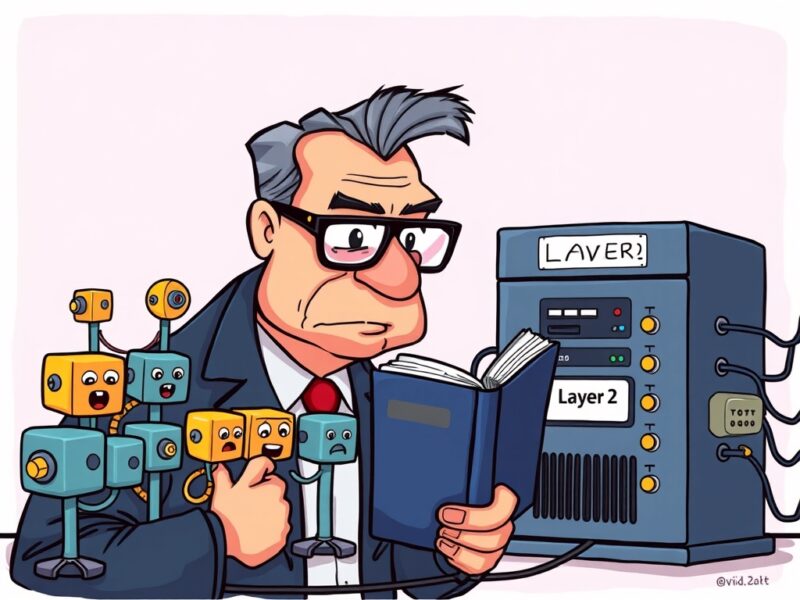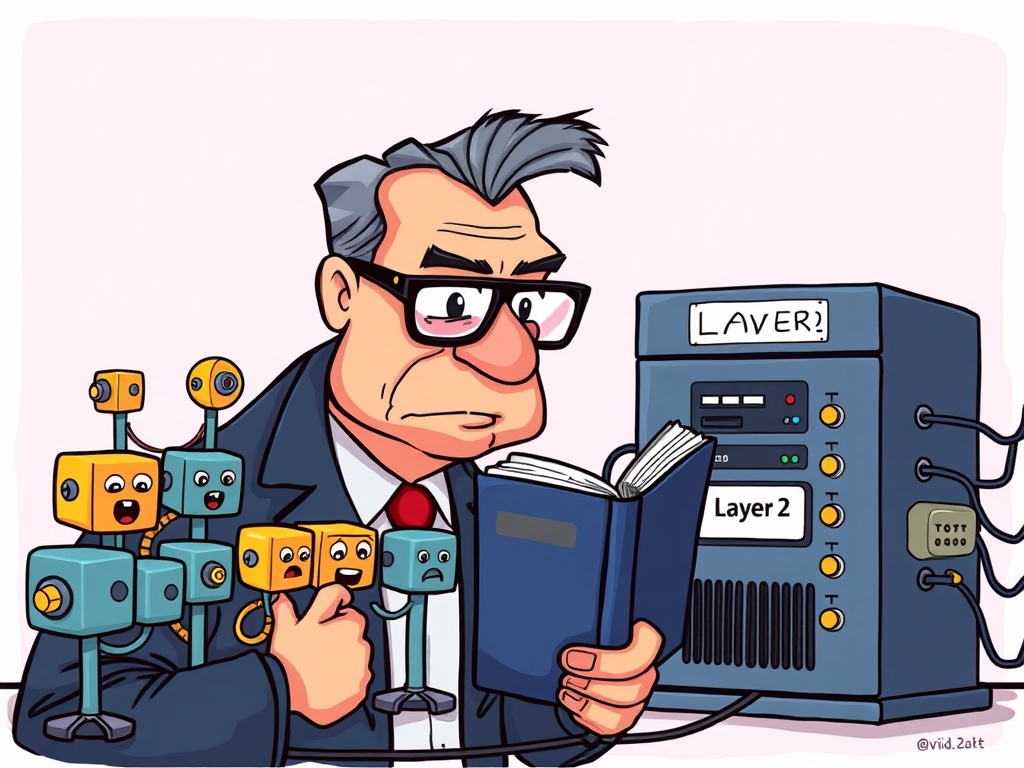Crucial Warning: SEC’s Peirce Flags Looming Layer 2 Regulation for Centralized Protocols
0
0

BitcoinWorld

Crucial Warning: SEC’s Peirce Flags Looming Layer 2 Regulation for Centralized Protocols
A significant development has emerged from the U.S. Securities and Exchange Commission (SEC), sending ripples across the crypto community. SEC Commissioner Hester Peirce, often dubbed ‘Crypto Mom’ for her progressive stance, has issued a crucial warning: centralized Layer 2 blockchains could soon find themselves under the purview of securities laws. This insight directly addresses the growing discussion around Layer 2 regulation and its profound implications for the future of blockchain scaling solutions.
Understanding the SEC’s Stance on Centralized Layer 2s
Commissioner Peirce’s remarks, as reported by CryptoSlate, draw a clear line between truly decentralized protocols and those that maintain elements of centralization. She explains that while fully decentralized protocols might navigate free from traditional securities laws, their centralized counterparts face a different reality.
- Decentralization is Key: Peirce emphasized that the level of control within a protocol is the determining factor.
- Exchange-Like Operations: If a single entity controls transactions, it starts to resemble a traditional exchange.
- Intermediary Role: Protocols whose operators act as intermediaries for trades may be required to comply with securities laws, similar to brokers or exchanges.
This distinction is vital for understanding the SEC’s perspective. The core concern revolves around investor protection and market integrity, which are central to securities regulation.
Why is Layer 2 Regulation a Growing Concern?
Layer 2 solutions are designed to enhance the scalability and efficiency of base-layer blockchains like Ethereum. They achieve this by processing transactions off the main chain, then periodically settling them on the Layer 1. However, the pursuit of speed and lower costs can sometimes lead to trade-offs in decentralization.
Many Layer 2s, especially in their early stages, might rely on centralized components for various functions, such as sequencers, validators, or upgrade mechanisms. This centralization introduces potential risks:
- Single Points of Failure: A centralized entity can become a target for attacks or be subject to undue influence.
- Censorship Risks: Centralized control could lead to the ability to censor transactions or users.
- Lack of Transparency: The operations of a centralized entity might not be as transparent as a fully decentralized network.
The SEC’s focus on Layer 2 regulation stems from these inherent risks. If investors are putting capital into systems that are centrally controlled, they might not have the same protections as they would in a truly decentralized environment.
Navigating the Future of Layer 2 Regulation: What’s Next?
This warning from Commissioner Peirce serves as a critical call to action for developers and project teams building on Layer 2 solutions. The path forward for many protocols will likely involve a stronger emphasis on progressive decentralization.
Projects should consider:
- Decentralizing Key Components: Moving away from single entities controlling sequencers, proposers, or upgrade paths.
- Enhancing Transparency: Clearly communicating the degree of decentralization to users and investors.
- Legal Scrutiny: Proactively assessing their operational structure against existing securities laws.
For users and investors, understanding the underlying architecture of the Layer 2s they interact with becomes even more important. A protocol’s claims of decentralization should be met with due diligence, especially in light of potential Layer 2 regulation.
The Impact of Potential Layer 2 Regulation on Innovation
While the prospect of increased regulation can seem daunting, it also presents an opportunity for the crypto space to mature. Clearer guidelines, even if stringent, can foster greater investor confidence and potentially attract more institutional participation. The challenge lies in balancing regulatory compliance with the innovative spirit that drives blockchain technology.
The SEC’s approach indicates a growing understanding of the nuances within the crypto ecosystem, moving beyond a blanket classification. This targeted focus on centralized components within Layer 2s suggests a future where the degree of decentralization will be a key factor in regulatory treatment.
Concluding Thoughts on Layer 2 Regulation
Commissioner Peirce’s warning is not merely a hypothetical statement; it’s a clear signal of the SEC’s evolving perspective on the rapidly expanding Layer 2 landscape. Projects that prioritize decentralization from their inception, or actively work towards it, will be better positioned to navigate the regulatory currents ahead. This ongoing dialogue between regulators and innovators will ultimately shape a more robust and compliant future for blockchain technology.
Frequently Asked Questions (FAQs)
Q1: What exactly is a Layer 2 blockchain?
A1: A Layer 2 blockchain is a secondary framework or protocol built on top of an existing blockchain (Layer 1) to improve its scalability and efficiency. It processes transactions off-chain and then settles them back on the main chain.
Q2: Why would centralized Layer 2s be regulated as securities?
A2: According to SEC Commissioner Peirce, if a Layer 2 protocol is controlled by a single entity and its operators act as intermediaries for trades, it functions similarly to a traditional exchange, thus potentially falling under securities laws designed to protect investors.
Q3: How can Layer 2 projects avoid regulatory scrutiny?
A3: Projects can aim for progressive decentralization, ensuring that control over key operational aspects is distributed among multiple, independent entities rather than concentrated in a single one. Transparency about their governance structure is also crucial.
Q4: Does this mean all Layer 2s are at risk of regulation?
A4: No, Commissioner Peirce specifically highlighted centralized Layer 2s. Truly decentralized protocols, where no single entity holds significant control, are less likely to be subject to the same securities regulations.
Q5: What should users look for in a Layer 2 protocol?
A5: Users should research the decentralization roadmap and current governance structure of a Layer 2. Understanding who controls key functions and how decisions are made can provide insight into its regulatory risk profile.
If you found this article insightful, consider sharing it with your network! Stay informed about the evolving regulatory landscape in the crypto space by sharing this crucial information.
To learn more about the latest crypto market trends, explore our article on key developments shaping Ethereum price action.
This post Crucial Warning: SEC’s Peirce Flags Looming Layer 2 Regulation for Centralized Protocols first appeared on BitcoinWorld and is written by Editorial Team
0
0
 Manage all your crypto, NFT and DeFi from one place
Manage all your crypto, NFT and DeFi from one placeSecurely connect the portfolio you’re using to start.




